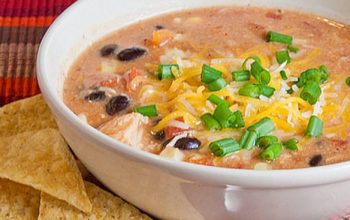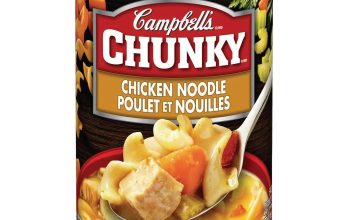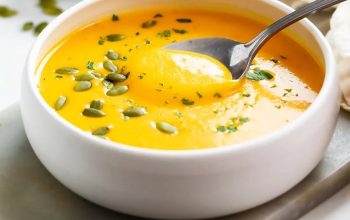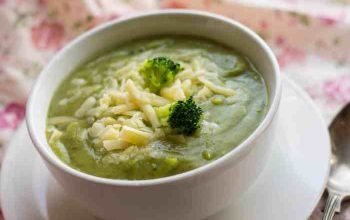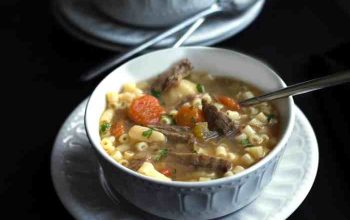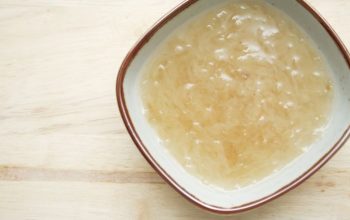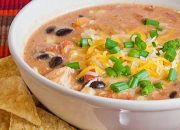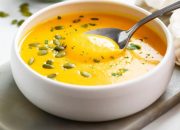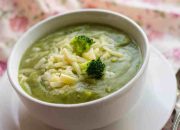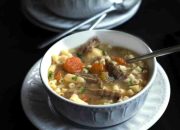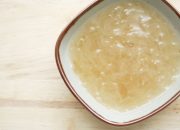A Literary Exploration of Pea Soup: Best Pea Soup Recipes
Best pea soup recipes – Pea soup, a seemingly humble dish, possesses a surprisingly rich history and cultural significance. Its evolution, from simple peasant fare to sophisticated culinary creations, reflects humanity’s enduring relationship with readily available ingredients and the inventive spirit of culinary traditions across the globe. This exploration delves into the literary landscape of pea soup, examining its diverse forms, essential components, and the art of its preparation and presentation.
Introduction to Pea Soup: A Culinary History and Nutritional Profile

Source: tasteofhome.com
Pea soup’s origins are ancient, with evidence suggesting its consumption dating back to the Middle Ages. Variations abound across cultures; from the hearty split pea soup of Britain and Ireland, to the creamy French soupe aux pois cassés, each iteration reflects local culinary preferences and agricultural resources. The nutritional benefits of peas are significant, providing substantial amounts of protein, fiber, vitamins (A, C, and K), and minerals (iron and potassium).
Pea soup, therefore, offers a nutritious and satisfying meal, adaptable to various dietary needs and preferences. Its versatility extends beyond a simple lunch or dinner; it can serve as a hearty starter, a comforting side dish, or even a base for more elaborate culinary creations.
Types of Pea Soup: A Comparative Analysis

Source: tasteofhome.com
The world of pea soup encompasses a diverse range of styles, each distinguished by its unique ingredients and preparation methods. Creamy pea soups, often characterized by a smooth, velvety texture, typically involve blending the cooked peas to achieve a luxurious consistency. In contrast, split pea soups retain a more rustic texture, with the split peas maintaining their individual form.
French pea soup, frequently enhanced with ham or bacon, showcases a richer, more savory profile. The taste profiles vary considerably; some versions emphasize a subtle sweetness from the peas themselves, while others boast a robust, savory depth due to the inclusion of smoked meats or herbs. The primary ingredients and cooking techniques dictate the final product’s character. Slow-cooked versions often develop a deeper, more complex flavor than those prepared quickly.
Essential Ingredients: The Building Blocks of Flavor and Texture
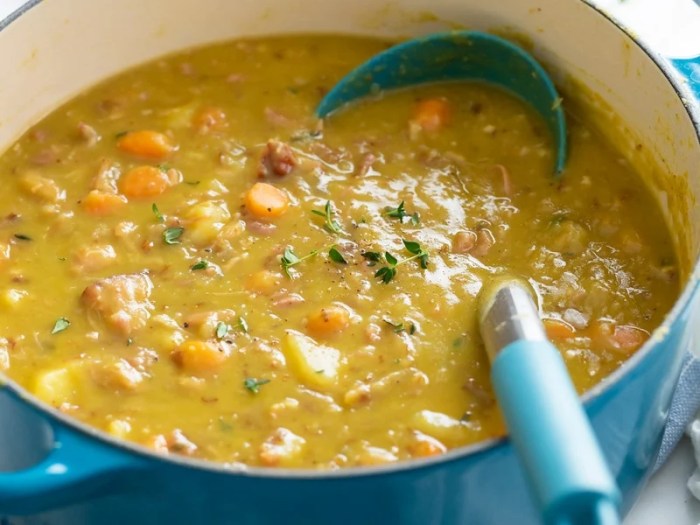
Source: thecozycook.com
The success of any pea soup recipe hinges on the careful selection and proportioning of its key ingredients. While the core ingredient remains peas (various types are discussed below), other elements contribute significantly to the overall taste and texture. These include aromatics like onions, carrots, and celery, which form the foundation of the flavor profile. Broth, whether vegetable or chicken, provides the liquid base, while seasonings such as salt, pepper, and herbs (bay leaf, thyme) add depth and complexity.
The type of pea used significantly impacts the final product’s character.
| Pea Type | Description | Flavor Profile | Best Use in Pea Soup |
|---|---|---|---|
| Split Peas | Dried, halved peas | Earthy, slightly sweet | Hearty, thick soups |
| Green Peas | Fresh or frozen whole peas | Sweet, delicate | Creamy, smoother soups |
| Yellow Peas | Dried, whole peas | Rich, buttery | Creamy or chunky soups |
| Black-Eyed Peas | Dried, small beans | Slightly sweet, nutty | Unique flavor additions |
Pea Soup Recipe Variations: A Culinary Journey
The inherent versatility of pea soup allows for endless variations in flavor profiles. A classic pea soup recipe relies on simple ingredients and a gentle simmering process to highlight the natural sweetness of the peas. A smoky version, however, might incorporate smoked ham hock or bacon, lending a distinct smoky undertone. Spicy pea soup could be achieved through the addition of chili flakes, jalapeños, or a dash of hot sauce, introducing a fiery kick.
A truly unique recipe might incorporate unusual ingredients like coconut milk for creaminess, lemongrass for a subtle citrus note, or even curry powder for an exotic twist. The following is a step-by-step example of a classic recipe:
- Sauté diced onions, carrots, and celery in olive oil until softened.
- Add split peas, vegetable broth, and bay leaf to the pot.
- Bring to a boil, then reduce heat and simmer for approximately 1-1.5 hours, or until peas are tender.
- Season with salt and pepper to taste. Blend a portion for creaminess (optional).
- Serve hot, garnished with fresh herbs.
Cooking Methods and Techniques: Mastering the Art of Pea Soup
Various cooking methods can be employed to achieve different textures and flavor profiles in pea soup. Stovetop cooking allows for close monitoring of the cooking process, ensuring perfect consistency. Slow cookers offer convenience, as they gently simmer the soup for extended periods, developing rich flavors. Pressure cookers significantly reduce cooking time, ideal for busy schedules. Each method presents advantages and disadvantages.
Finding the best pea soup recipes often involves experimenting with different legumes for depth of flavor. For a truly unique twist, consider incorporating a vibrant blend of beans using this fantastic soup bean mix recipe as a base; the earthy notes will beautifully complement the sweetness of the peas. Ultimately, the best pea soup is the one that perfectly suits your palate, so don’t be afraid to get creative!
Stovetop cooking offers the greatest control but requires more hands-on time. Slow cookers are convenient but might not develop as intense a flavor as stovetop methods. Pressure cookers are fast but require careful handling. Achieving the desired consistency involves adjusting the cooking time and the amount of liquid used. Blending a portion of the soup after cooking creates a creamy texture, while leaving some peas whole adds a pleasing textural contrast.
Serving Suggestions and Accompaniments: Elevating the Dining Experience, Best pea soup recipes
Pea soup’s versatility extends to its serving style and accompaniments. It can serve as a light starter, a hearty main course, or a comforting side dish. A crusty bread, for dipping, is a classic accompaniment, absorbing the flavorful broth. Croutons, adding a satisfying crunch, enhance the textural contrast. Various toppings, such as fresh herbs (parsley, chives), a dollop of crème fraîche, or a sprinkle of grated cheese, can further elevate the dining experience.
These additions complement the soup’s flavors and enhance its overall appeal.
Visual Representation of Pea Soup: The Aesthetics of Culinary Art
The visual appeal of a perfectly cooked pea soup is as important as its taste. A vibrant green hue, indicating fresh, high-quality peas, is highly desirable. The texture should be inviting; a creamy version should possess a smooth, velvety consistency, while a chunky version should showcase the integrity of the peas. Presentation plays a crucial role in shaping the perception of the dish.
Serving the soup in a rustic bowl, perhaps garnished with a sprig of fresh herbs or a swirl of crème fraîche, enhances its visual appeal. Careful attention to detail, from the color and consistency of the soup to the choice of serving vessel and garnishes, elevates the overall dining experience, transforming a simple dish into a culinary masterpiece.
FAQ Overview
Can I freeze pea soup?
Yes, pea soup freezes well. Allow it to cool completely before storing in airtight containers for up to 3 months.
What can I do if my pea soup is too thick?
Thin it out by adding a little broth or water, stirring until you reach your desired consistency.
Can I use different types of peas interchangeably?
While some peas work better than others in certain recipes, experimentation is encouraged! However, note that different peas will impact the final texture and flavor.
What are some vegetarian/vegan alternatives for ham hock in pea soup?
Vegetable broth, smoked paprika, or a combination of mushrooms and vegetable broth can add depth of flavor to vegetarian/vegan pea soup.

